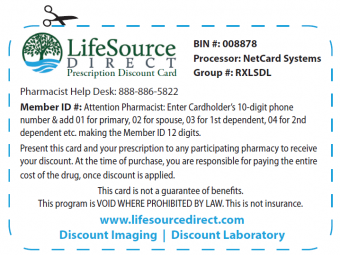Very soon, your high school graduate will be heading off to college. And while you may have provided your son or daughter with the necessary  dorm room equipment, last-minute cooking and laundry instructions and a generous supply of pantry items for meals-on-the-go, have you had that all-important talk with your child?
dorm room equipment, last-minute cooking and laundry instructions and a generous supply of pantry items for meals-on-the-go, have you had that all-important talk with your child?
No, not that one—the one about money, finances and credit card usage. For many college-age students, the focus of the next four years will probably be more on school than on solvency. While they know that higher education comes at a price, they figure they’ll worry about those pesky student loans later, once they’re out of school and in the workforce.
But the reality can be far from rosy. According to an Associated Press story, more than half of bachelor’s degree-holders under the age of 25 were jobless or underemployed in 2011, the highest share in at least 11 years. When you consider that student loan payments will be coming due post-graduation—and 64% of Millennials financed their education to the tune of a student debt total that exceeded $1 trillion at the end of 2012, according to the Consumer Financial Protection Bureau—it is no surprise that the debt load carried by current GenY-ers is their biggest financial concern.
And along those same lines, a Wells Fargo survey showed that Millennials believe that financial literacy should be taught—either in high school or college or by parents. But even if you haven’t broached the subject yet, it’s not too late. LIFE has tools to help you help your child to become fiscally aware.
Start with the resources available through the Next Generation website. The site offers a range of free resources focusing on five key areas—risk, life insurance, health insurance, disability insurance and financial planning—and includes quizzes, family activities, glossaries with terms and phrases related to insurance and financial planning and a video library.
Then explore the materials on the LIFE site, such as the LIFE Lessons videos (such as those about Brittney LaCombe and Jermaine Suggs and realLIFEstories such as the one about Missy Junk personalize the role insurance plays in protecting a family’s future. In particular, the section for singles focuses on three key areas: controlling debt, saving money and protecting assets and income with insurance.
The LIFE calculators, such as the Life Insurance Needs Calculator, can provide you and your student with useful information about how to evaluate their need for coverage and the potential for risks, while this blog offers succinct articles about the role of financial planning and insurance.
Finally, involve your student in discussions about family budgets and finances, and make them part of your meetings with insurance professionals. They will learn how you make decisions regarding insurance coverage and investments, which will provide them with useful information when they need to make the same decisions and choices.

